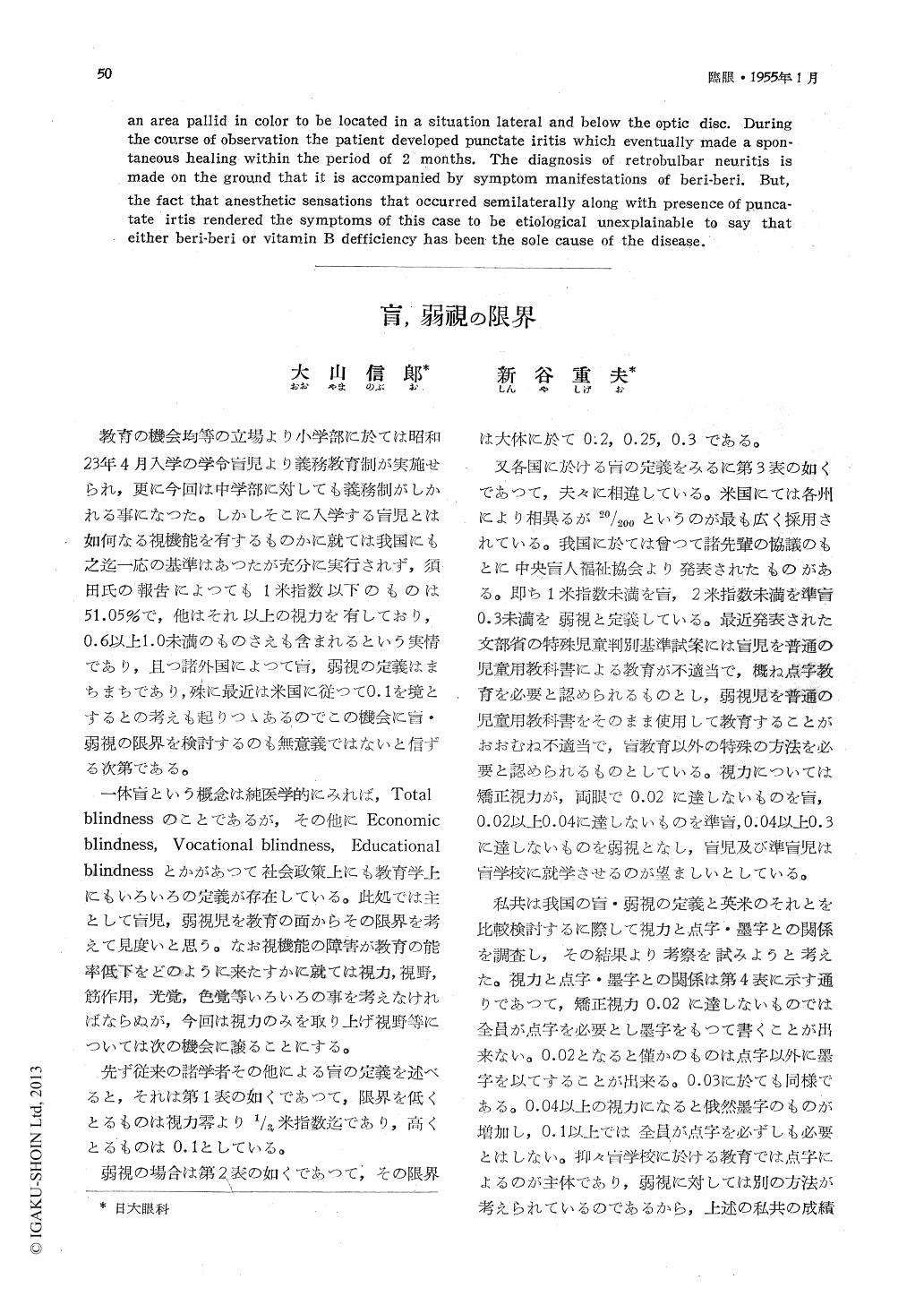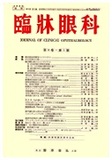Japanese
English
- 有料閲覧
- Abstract 文献概要
- 1ページ目 Look Inside
教育の機会均等の立場より小学部に於ては昭和23年4月入学の学令盲児より義務教育制が実施せられ,更に今回は中学部に対しても義務制がしかれる事になつた。しかしそこに入学する盲児とは如何なる視機能を有するものかに就ては我国にも之迄一応の基準はあつたが充分に実行されず,須田氏の報告によつても1米指数以下のものは51.05%で,他はそれ以上の視力を有しており,0.6以上1.0未満のものさえも含まれるという実情であり,且つ諸外国によつて盲,弱視の定義はまちまちであり,殊に最近は米国に従つて0.1を境とするとの考えも起りつゝあるのでこの機会に盲・弱視の限界を検討するのも無意義ではないと信ずる次第である。
一体盲という概念は純医学的にみれば,Total blindnessのことであるが,その他にEconomic blindness, Vocational blindness, Educationalblindnessとかがあつて社会政策上にも教育学上にもいろいろの定義が存在している。此処では主として盲児,弱視児を教育の面からその限界を考えて見度いと思う。なお視機能の障害が教育の能率低下をどのように来たすかに就ては視力,視野,筋作用,光覚,色覚等いろいろの事を考えなければならぬが,今回は視力のみを取り上げ視野等については次の機会に譲ることにする。
In the present age of compulsory education system for the blind, the lack of definitions of blindness and amblyopia have grievously been felt. In response to the demand, the authors have researched many definitions and views home and abroad, and compared them with one another.
In England and U.S.A. the sight 20/200 or less with correction is defined as blindness, while 20/70 as amblyopia. In Japan, however, the border-line, of blindness has been marked on 0.02 and that of amblyopia on 0.3.

Copyright © 1955, Igaku-Shoin Ltd. All rights reserved.


